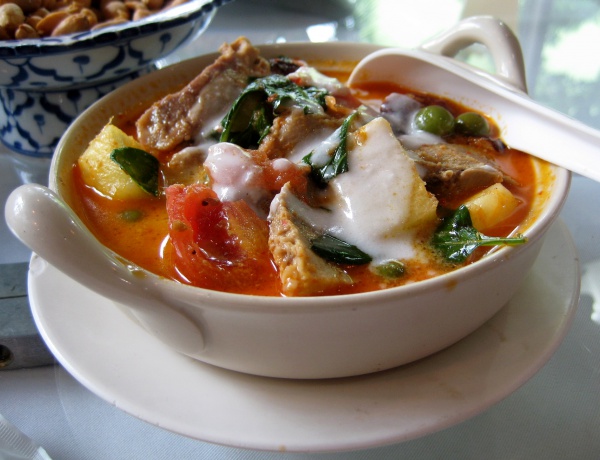Facts About Thai curry
Thai curry is a cherished staple in Thai cuisine, celebrated for its rich and aromatic flavors. When we mention Thai curry, we could be referring to the curry paste itself or the delectable dishes crafted from it. Typically, these dishes combine curry paste with coconut milk or water, alongside a mix of meat, seafood, vegetables, or fruit, all garnished with fresh herbs.
A key distinction between Thai and Indian curries lies in the use of herbs and aromatic leaves in Thai recipes, as opposed to a blend of dried spices. In Thailand, curry dishes are called "kaeng" and are usually served with rice. The heat level in Thai curries can vary enormously, depending on the type and quantity of chili used in the paste.
Thai curries come in many forms, ranging from dry dishes to thick stews or broths. They are commonly enjoyed with rice or noodles, and sometimes with roti, a fried flatbread, for additional texture.
The curry paste is the essence of any Thai curry, typically made from a blend of shrimp paste, chilies, onions, garlic, lemongrass, and galangal. Other spices like turmeric, coriander seeds, cardamom pods, and cumin may also be included. The main ingredients in Thai curries can be quite diverse, encompassing meat, fish, and shellfish to a variety of vegetables and fruits. Traditional recipes might even feature unique ingredients like frogs, snakes, and wild game.
Some popular Thai curry dishes include Kaeng Kari (yellow curry), Kaeng Khiao Wan (green curry), Kaeng Phet (red curry), Kaeng Som (sour curry), and Khao Soi (curry noodle soup). These dishes offer a spectrum of flavors, from spicy and savory to creamy and mild. Fresh herbs like Thai basil, along with fish sauce and sugar, are often used to enhance the taste of these curries.

 Cambodia
Cambodia